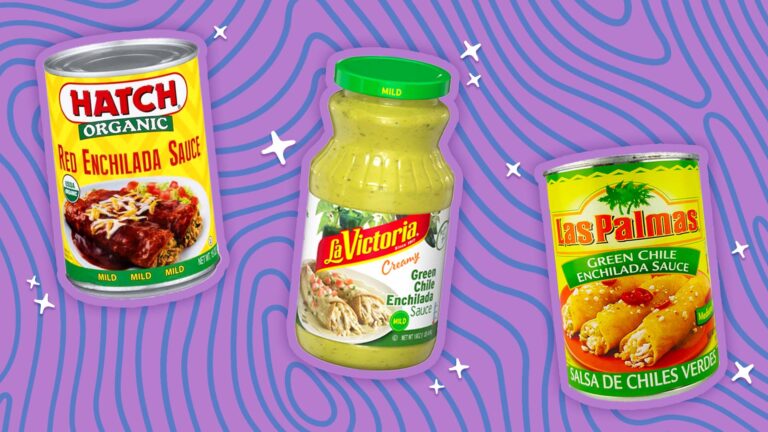Swai fish, often referred to as pangasius or striped catfish, is becoming increasingly popular in the culinary world. Known for its mild flavor and versatility in various dishes, swai fish has earned a place on many dinner tables around the globe. This article will delve into everything you need to know about swai fish, including its origin, nutritional value, culinary uses, environmental impact, and tips for purchasing and cooking this unique fish.
What is Swai Fish?
Swai fish (Pangasius hypophthalmus) is a type of catfish native to the Mekong River in Southeast Asia, particularly in countries like Vietnam, Thailand, and Cambodia. It is primarily farmed in freshwater environments and has become a staple in many Asian cuisines. Swai fish has gained traction in Western countries due to its affordable price and delicate taste.
Characteristics of Swai Fish
Swai fish has a unique appearance. It features a long, flat body with a light grayish or silver color. The fish can grow up to three feet long but is typically harvested at a smaller size for commercial use. One notable characteristic of swai fish is its broad head and long, whisker-like barbels, which help it navigate through murky waters in search of food.
Nutritional Value of Swai Fish
Swai fish is not only delicious but also nutritious. It is a good source of protein, omega-3 fatty acids, and essential vitamins and minerals. Here’s a breakdown of the nutritional benefits:
- Protein: Swai fish is rich in protein, making it an excellent choice for those looking to increase their protein intake. A typical serving (3.5 ounces) contains around 20 grams of protein, essential for muscle growth and repair.
- Low in Calories: With only about 90 calories per serving, swai fish is a low-calorie option for those watching their weight.
- Omega-3 Fatty Acids: Swai fish contains omega-3 fatty acids, which are crucial for heart health, brain function, and reducing inflammation.
- Vitamins and Minerals: Swai fish is a source of important vitamins like B12, which is vital for nerve function and the production of DNA and red blood cells. It also provides minerals like phosphorus and selenium, essential for bone health and antioxidant defense.
Culinary Uses of Swai Fish
Swai fish is known for its mild flavor, which allows it to adapt well to various cooking methods and flavor profiles. Here are some popular culinary uses for swai fish:
1. Grilling
Grilling swai fish enhances its natural flavor. Simply marinate the fillets in lemon juice, olive oil, garlic, and herbs for about 30 minutes before grilling. This method gives the fish a nice smoky flavor while keeping it moist.
2. Baking
Baking is a simple and healthy way to prepare swai fish. Place the fillets in a baking dish, season with salt, pepper, and your choice of spices, and bake at 375°F (190°C) for 15-20 minutes. The result is a flaky, tender fish that can be served with vegetables or rice.
3. Frying
Frying swai fish creates a crispy exterior while maintaining a tender interior. Dredge the fish in seasoned flour or breadcrumbs before frying in hot oil until golden brown. Serve it with tartar sauce or a squeeze of lemon for added flavor.
4. Stir-Frying
Swai fish can be sliced into strips and added to stir-fry dishes. Its mild flavor complements vegetables, soy sauce, and spices well. This method is quick and perfect for busy weeknight dinners.
Swai Fish vs. Other Fish Varieties
When comparing swai fish to other popular fish varieties, several factors come into play, including flavor, texture, and sustainability.
1. Swai Fish vs. Tilapia
Both swai fish and tilapia are mild-flavored, versatile fish options. However, swai fish tends to be more tender and has a slightly sweeter taste compared to tilapia. Additionally, tilapia is often farmed in more regulated environments, which may make it a more sustainable choice for some consumers.
2. Swai Fish vs. Catfish
While swai fish is a type of catfish, it is distinct from the traditional North American catfish commonly found in Southern cuisine. North American catfish has a stronger flavor and firmer texture, making it more suitable for frying and grilling.
3. Swai Fish vs. Salmon
Salmon is known for its rich flavor and high omega-3 fatty acid content. While swai fish contains some omega-3s, salmon is generally considered a more nutritious option due to its higher fat content and omega-3 levels. However, swai fish is often more affordable and accessible than salmon.
Environmental Impact of Swai Fish Farming
Swai fish is predominantly farmed in freshwater environments in Southeast Asia. While aquaculture can provide a sustainable source of protein, there are concerns about the environmental impact of swai fish farming.
1. Water Pollution
Intensive fish farming can lead to water pollution from fish waste, uneaten feed, and chemicals used in aquaculture. This pollution can harm local ecosystems and fish populations.
2. Habitat Destruction
The construction of fish farms can lead to habitat destruction, especially in sensitive areas like wetlands and riverbanks. This can impact local wildlife and biodiversity.
3. Sustainable Farming Practices
To address these concerns, some farms are adopting sustainable practices, such as reducing the use of chemicals, improving waste management, and implementing responsible breeding programs. Consumers can look for certifications like the Aquaculture Stewardship Council (ASC) to ensure they are purchasing sustainably sourced swai fish.
How to Purchase and Store Swai Fish
When buying swai fish, it’s important to know how to select fresh fish and store it properly.
1. Selecting Fresh Swai Fish
- Look for Bright Eyes: Fresh fish should have clear, bright eyes. Cloudy or sunken eyes may indicate that the fish is not fresh.
- Check the Smell: Fresh swai fish should have a mild scent. If it smells overly fishy or sour, it’s best to avoid it.
- Examine the Flesh: The flesh should be firm and moist. If it feels slimy or has a dull color, it may not be fresh.
2. Storing Swai Fish
- Refrigeration: If you plan to use swai fish within a day or two, store it in the refrigerator at a temperature of 32°F (0°C). Wrap it tightly in plastic wrap or place it in an airtight container.
- Freezing: For longer storage, swai fish can be frozen. Wrap the fillets in plastic wrap and then place them in a freezer bag. Frozen swai fish can last for up to six months.
Cooking Tips for Swai Fish
To ensure that your swai fish dishes turn out delicious, consider these cooking tips:
- Don’t Overcook: Swai fish cooks quickly, so be mindful not to overcook it, as this can lead to a dry texture. Aim for an internal temperature of 145°F (63°C).
- Use Acid: Incorporating acidic ingredients like lemon juice or vinegar can enhance the flavor of swai fish and balance its richness.
- Experiment with Spices: Swai fish absorbs flavors well, making it a great canvas for various spices and herbs. Don’t be afraid to get creative with seasoning.
Swai Fish Recipes
Here are three easy and delicious recipes featuring swai fish:
1. Lemon Garlic Swai Fish
Ingredients:
- 2 swai fish fillets
- 2 tablespoons olive oil
- 2 cloves garlic, minced
- Juice of 1 lemon
- Salt and pepper to taste
- Fresh parsley for garnish
Instructions:
- Preheat the oven to 375°F (190°C).
- In a baking dish, mix olive oil, garlic, lemon juice, salt, and pepper.
- Place the swai fillets in the dish and coat them with the mixture.
- Bake for 15-20 minutes or until the fish is flaky and cooked through.
- Garnish with fresh parsley before serving.
2. Swai Fish Tacos
Ingredients:
- 2 swai fish fillets
- 1 tablespoon taco seasoning
- Corn tortillas
- Shredded cabbage
- Salsa
- Lime wedges
Instructions:
- Season the swai fish fillets with taco seasoning.
- Heat a skillet over medium heat and cook the fish for 3-4 minutes per side or until cooked through.
- Warm the corn tortillas in a separate pan.
- Assemble the tacos by placing the fish on the tortillas and topping with shredded cabbage and salsa.
- Serve with lime wedges.
3. Sweet and Sour Swai Fish Stir-Fry
Ingredients:
- 2 swai fish fillets, cut into bite-sized pieces
- 1 bell pepper, sliced
- 1 onion, sliced
- 1 cup broccoli florets
- 1/4 cup sweet and sour sauce
- Cooked rice for serving
Instructions:
- In a large skillet, heat oil over medium-high heat.
- Add the swai fish pieces and cook until browned, about 3-4 minutes.
- Add the bell pepper, onion, and broccoli, and stir-fry for an additional 3-5 minutes.
- Pour in the sweet and sour sauce and stir until everything is well-coated.
- Serve over cooked rice.
Health Benefits and Concerns of Swai Fish
Swai fish offers
numerous health benefits, but it’s essential to be aware of potential concerns.
Benefits
- Heart Health: The omega-3 fatty acids found in swai fish can contribute to heart health by lowering triglyceride levels and reducing the risk of heart disease.
- Weight Management: With its low calorie and high protein content, swai fish can be a great addition to a weight management plan.
- Brain Function: The nutrients in swai fish, including omega-3s, support cognitive function and may help protect against age-related decline.
Concerns
- Sustainability Issues: As mentioned earlier, there are environmental concerns regarding swai fish farming. Choosing sustainably sourced swai fish can help mitigate these issues.
- Contaminants: Like many fish, swai fish can contain contaminants like mercury. While swai fish generally has lower mercury levels than larger fish, it’s advisable to consume it in moderation, especially for pregnant women and young children.
Conclusion
Swai fish is a versatile, affordable, and nutritious option for seafood lovers. Its mild flavor and adaptability make it suitable for various dishes, from grilling to stir-frying. By understanding its nutritional value, culinary uses, and environmental impact, you can make informed decisions about incorporating swai fish into your diet. Whether you’re trying it for the first time or looking for new recipes to enjoy, swai fish can be a delicious and healthy addition to your meals.










